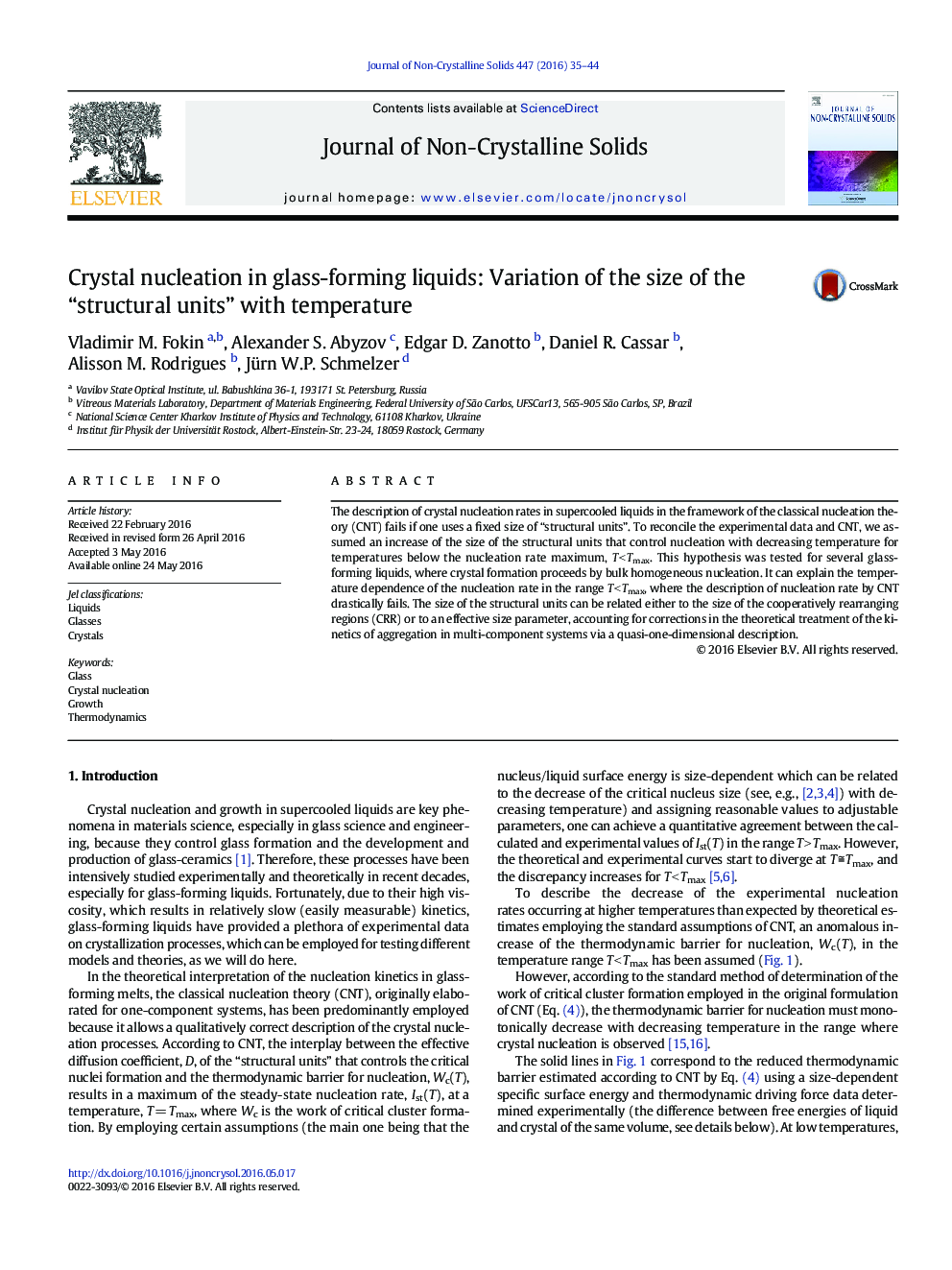| Article ID | Journal | Published Year | Pages | File Type |
|---|---|---|---|---|
| 1480141 | Journal of Non-Crystalline Solids | 2016 | 10 Pages |
•Decoupling at low temperatures between experimental crystal nucleation rates and that predicted by the classical nucleation theory is analyzed.•To reconcile the experimental and theoretical nucleation data an increase of the size of the structural units that control nucleation with decreasing temperature is assumed.•This assumption is tested for several glasses revealing homogeneous bulk nucleation.•Different interpretations of the temperature variation of the size of the structural units are proposed.
The description of crystal nucleation rates in supercooled liquids in the framework of the classical nucleation theory (CNT) fails if one uses a fixed size of “structural units”. To reconcile the experimental data and CNT, we assumed an increase of the size of the structural units that control nucleation with decreasing temperature for temperatures below the nucleation rate maximum, T < Tmax. This hypothesis was tested for several glass-forming liquids, where crystal formation proceeds by bulk homogeneous nucleation. It can explain the temperature dependence of the nucleation rate in the range T < Tmax, where the description of nucleation rate by CNT drastically fails. The size of the structural units can be related either to the size of the cooperatively rearranging regions (CRR) or to an effective size parameter, accounting for corrections in the theoretical treatment of the kinetics of aggregation in multi-component systems via a quasi-one-dimensional description.
